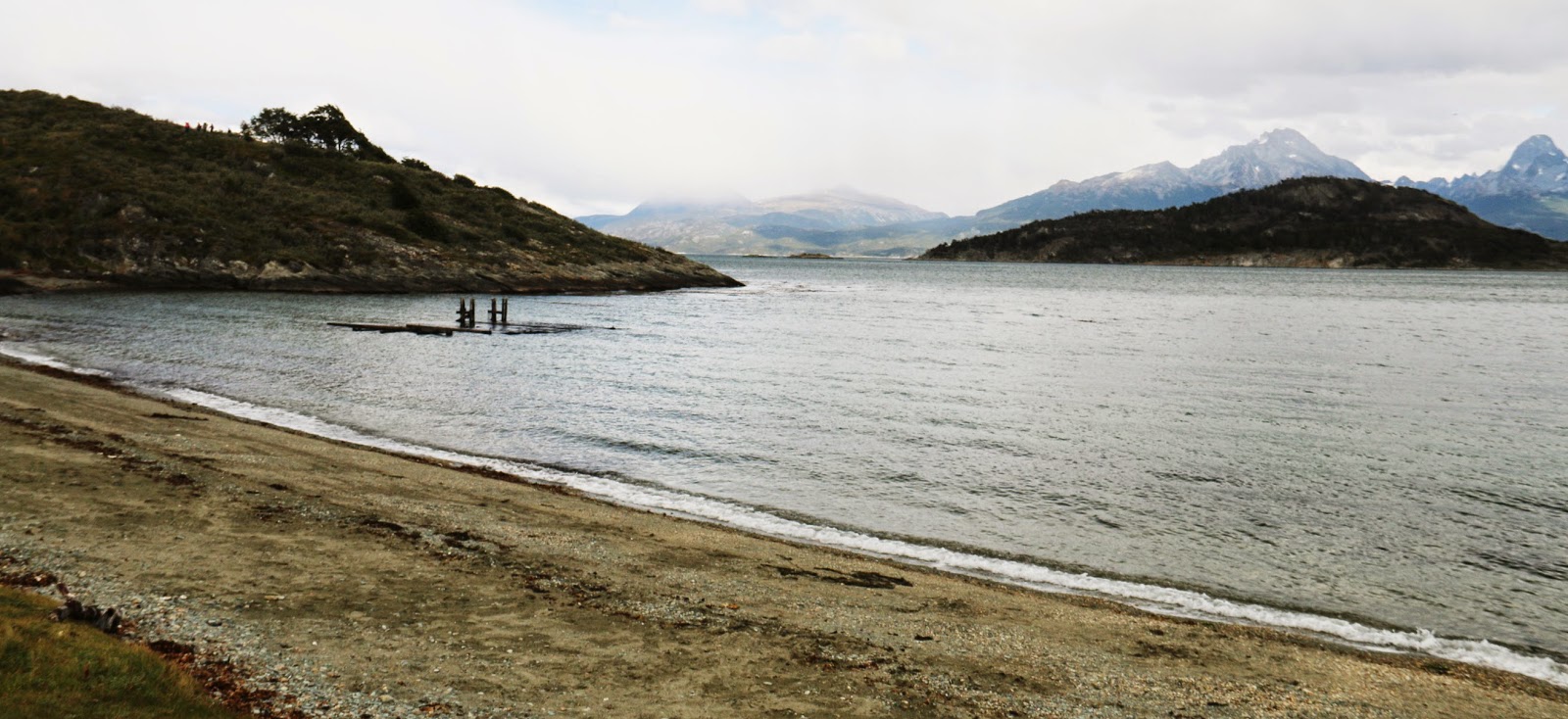Ushuaia, Argentina, is the furthest city to the south, located on an island
at the southern tip of Argentina, and at the end of the Andes Mountain Range. The island is also shared with Chile. Yep, I could see Chile from where I was
standing.
.JPG) |
| Cape Horn, another accomplishment. I didn't know we got a certificate. Yahoo. |
I looked to see if we would sail over the edge of the earth. Not today.
However, howling headwinds, mountainous seas and rocky coastlines have
spelled the end to many a ship’s voyage with its bright-eyed sailors looking
for treasure, land or whatever explorers were hoping to find.
.JPG) |
| What appears to be a perfect setting, and is now. I wonder if it was when it was a penal colony? |
It’s beautiful here, and Ushuaia is a picturesque town of about 80,000, quadrupling
in size during the 70s and 80s, but it seems much smaller. The surrounding mountains, with green at the
base, then rock and snow-capped tips, remind me of home. So does the temperature, 54 degrees at 10 a.m. That’s a nice summer day in Anchorage. This is their fall, as they are transitioning
from summer to winter, the opposite of our seasons. In the winter our guide said they receive
about 30 meters of snow. Not being
arithmetically sharp, we’re not sure but figured that might be about 90
feet. Is that true? The roofs are all slanted and are covered
with aluminum, so maybe.
The explorer Magellan in 1520 called it Tierra del Fuego because he saw flames
rising from the darkened islands. The
flames came from the early Indians who settled here as they didn’t wear many
clothes and were always gathered around fires to keep warm. Because of that for more than three hundred
years that name struck fear into the hearts of mariners.
.JPG) |
| These are the types of huts the Indians occupied. |
Ushuaia is a former penal colony and served as the gateway to the area. The worst criminals and political criminals
were sent here and when the prison was closed in 1947 was home to more than 700
prisoners, twice the capacity intended.
.JPG) |
| A replica of the prison uniform is available if you want to purchase one. |
As vast, remote, mountainous and harsh as the land seems except for the current
city, I would think not many prisoners would have wanted to try to make their
way to some other place. Prisoners put
in a lot of hard work cutting down trees for heating, building infrastructure
and doing repairs on things like the sewage systems and docks; however, in
those days but it would probably have been better than trying to escape.
.JPG) |
| Summer and winter the prisoners cut trees. The height of the stump can give you a clue as to whether it was winter with a lot of snow or summer when the stumps were cut close to the ground. |
The prisoners worked every day, no matter the weather. There was a train of sorts that took them to
the forest to cut trees. We rode a
narrow-gauge train that traces the route the original one did. The train is called The End of the World
Train, and is located in the Tierra del Fuego National Park.
.JPG) |
| The railroad beckoned. |
.JPG) |
| All aboard. |
.JPG) |
| There were three colors of steam engines ... red, green and black. |
From the train we continued by bus to Ensenada Bay. There were a couple of things that were
interesting. One was an outhouse,
apparently the furthest south one … I took the opportunity to leave my mark
there.
.JPG) |
| It looks like a small communication building ... but it's the outhouse. |
The second was the furthest south post office. It had a line of people waiting to send a
postcard with that postmark on it.
.JPG) |
| $2 to post a card here, or free in town. |
The bay was beautiful, in fact, breathtaking, with rocks and sand, and
views that are spectacular. From here
you look out on the Beagle Channel, named for a ship that carried Charles
Darwin.
.JPG) |
| Beautiful mountains are everywhere you look. |
The Beagle Channel leads in and out of the harbor, and the mountains
plummet to their icy waters. I searched again for Beagles. None were to be found although I saw a Beagle
buoy, a seldom-seen sight. I wasn’t
quick enough to get a photo of it.
.JPG) |
| Our ship awaiting its passengers. |
We pulled up anchor and headed out, hoping to reach
Glacier Alley before dark. Barely. And once again the wind was howling, the rain
was coming down.
.JPG) |
| One of the glaciers in Glacier Alley as it's called. |
The photo barely shows the glacier reaching to the sea. Maybe the next glacier will be more cooperative for photographing. And so we continued on.
.JPG)
.JPG)
.JPG)
.JPG)
.JPG)
.JPG)
.JPG)
.JPG)
.JPG)
.JPG)
.JPG)
.JPG)
.JPG)
No comments:
Post a Comment